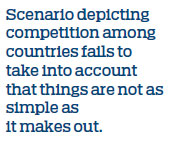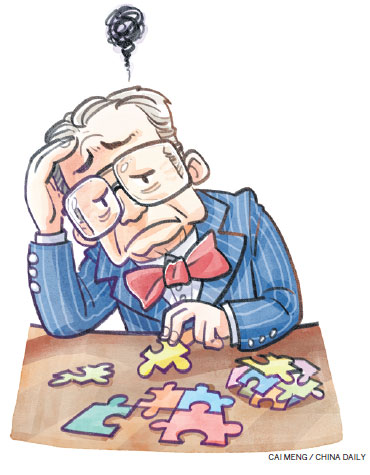Real world more complex than theory
David Ricardo's theory of comparative advantage has long been regarded as a powerful weapon to defend free trade. In Ricardo's example, there are two countries whose production factor inputs are merely labor and who both produce two identical goods but with different productivity. In this case each of the two need only produce the goods for which it has a higher productivity and trade the produced goods with the other country, in doing so the total benefits and income for both countries will increase. John Stuart Mill's supplements were later added to Ricardo's theory, and people refer to the combination as the Ricardo-Mill Model.
In 2004, US economist Paul Samuelson used US-China trade as an example to illustrate his theory that technological progress in China could wipe out all potential gains for the United States, since their respective comparative advantages would no longer exist, which would mean that the two countries would return to prior-to-trade self-sufficiency. In this process, the economy of the US would maintain sustained growth, but its growth rate would slow due to China's lower wages and technology imitation. China's per capita income would rise thanks to technological advances. And, in the end, personal incomes in the US would suffer lasting damage.

This logically unassailable Samuelson Scenario emerged as China picked up its growth rate and narrowed down the gap between itself and the US after its accession into the World Trade Organization. Many economists have criticized, from an academic perspective, Donald Trump's accusation of China taking huge advantage of the US, but they, and even Trump himself, have failed to realize that it is the Samuelson Scenario that Trump's stance is based on.
Therefore, to refute the Trump administration's unilateral protectionist policies requires identifying the flaws and conditionality of the Samuelson Scenario.
First, the market size will maintain a sustained expansion with constantly deepening international division of labor and intercountry exchanges, the benefits of which could offset the negative impact induced by the Samuelson Scenario on certain goods, or could at least drastically reduce its possibility.
Second, just as the Samuelson Scenario produces a negative impact for the US, it could also impact China in the same way, as the productivity of exporters such as India and Vietnam is catching up with China.
Third, the Samuelson Scenario could be induced by the external factor of China's increasing productivity, but also by the internal factor of declining US productivity.
Fourth, facts have shown that the majority of the current industrialized countries all started the industrialization process 200 years ago, and that the number of countries which manage to catch up by means of late-mover advantages is few.
Fifth, the Samuelson Scenario is grounded in the virtual condition of zero transaction costs. But in the real world transaction costs are always larger than zero.
Policies without the backing of theories will prove unconvincing. If the theoretical backing is not strong enough, the policies will still cast doubts in people's mind. How about we stop sticking theories on policies and let the two go separate ways? Well, the real situation could be much more complicated than that.
The author is director of Institute of World Economics and Politics at Chinese Academy of Social Sciences. The author contributed this article to China Watch, a think tank powered by China Daily. The views do not necessarily reflect those of China Daily.

(China Daily 02/13/2019 page13)














